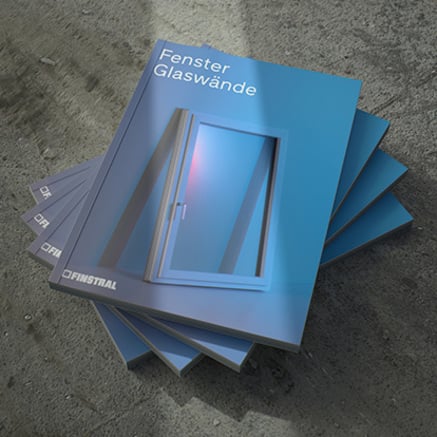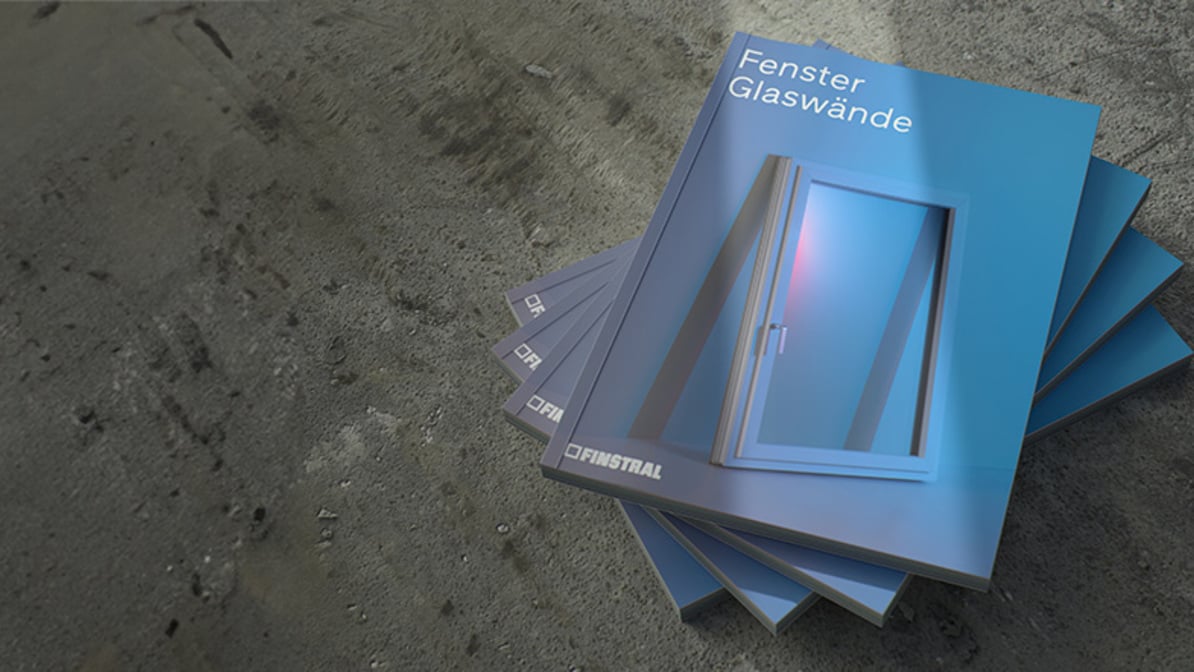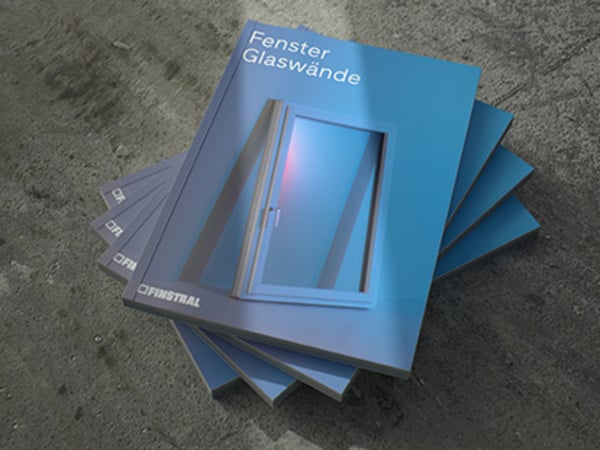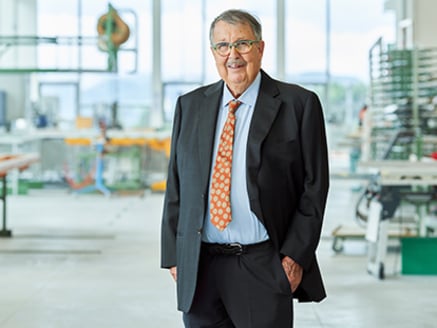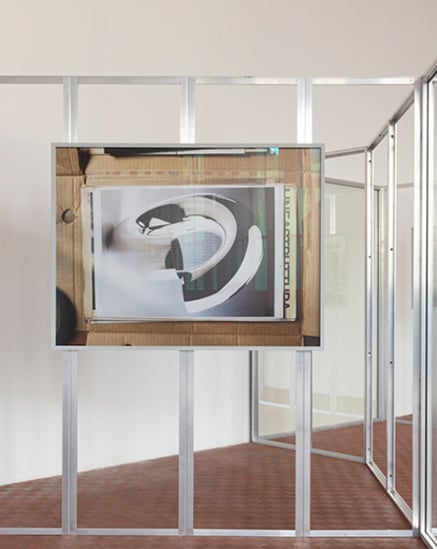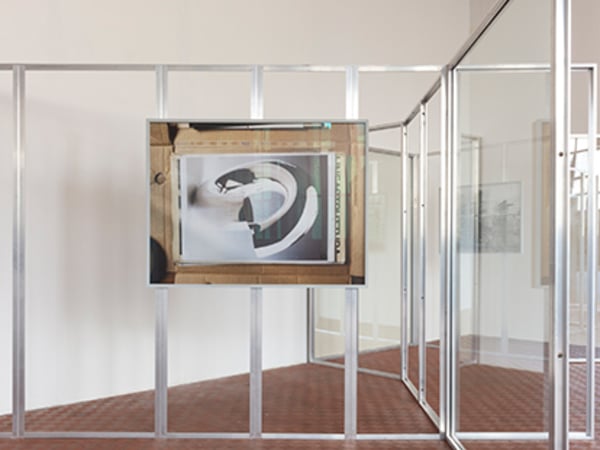Strong stuff.
There is no alternative. Joachim Oberrauch on the benefits of hard PVC in window construction.
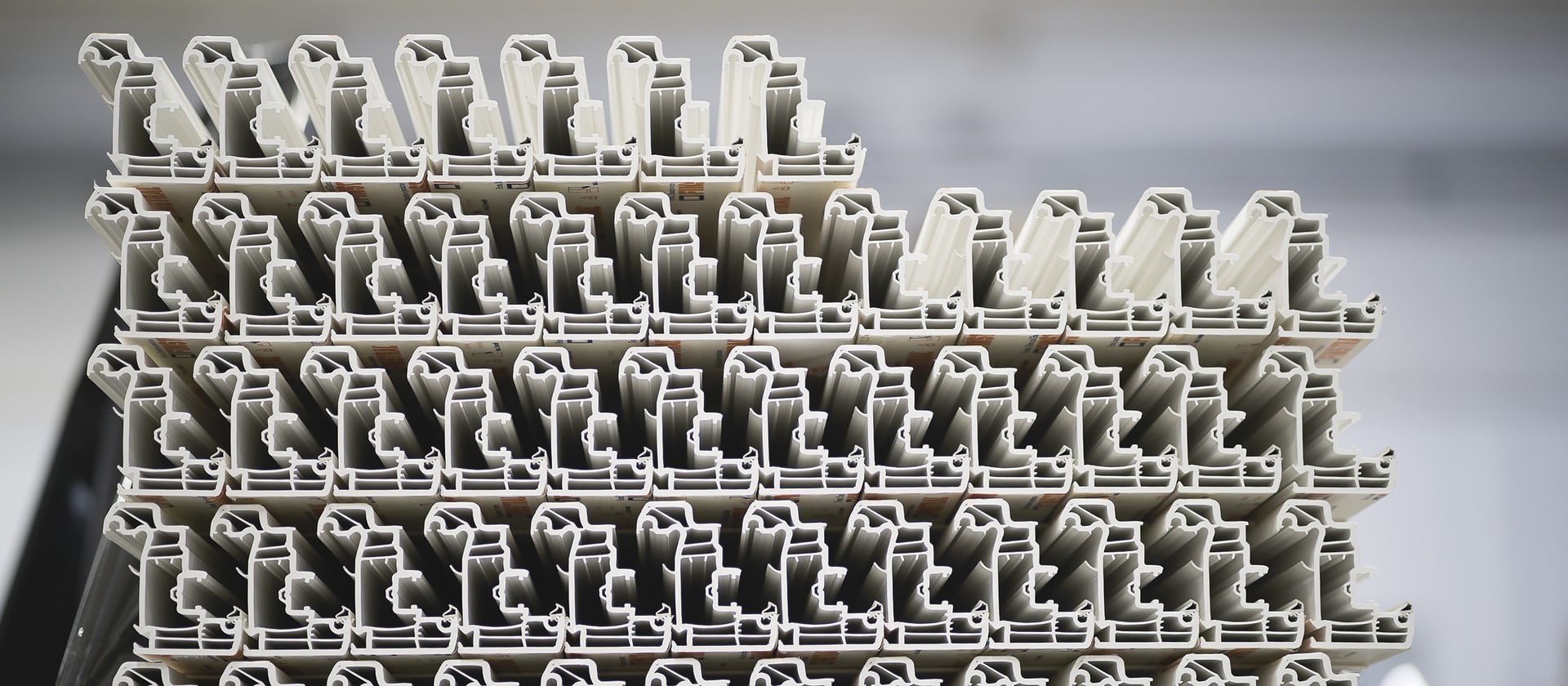
When Finstral began making polyvinyl chloride windows, they were pioneers. Today, 50 years later, every second window frame made in Europe is a PVC frame. But Finstral goes further still and is the only window manufacturer with a clear approach: the core always contains PVC. An interview with Joachim Oberrauch
Interview: Anna Thaler
There is always a PVC profile at the core even of Finstral’s aluminium and wooden windows. Why?Joachim Oberrauch The core of a window is responsible for its function: it protects against heat, cold, noise, moisture and burglars. And creates an aesthetic framework that allows plenty of light to enter the room. Of all the materials that are suitable for window construction, PVC is the most capable of doing all that. It is watertight, stable and provides excellent insulation. It is in addition very malleable and very easy to process: for example, only PVC profile pieces can be welded together to guarantee airtight and watertight frame corners.
Why are plastic windows still less popular than, for example, wooden windows?The choice of material is all about finding the aesthetic that perfectly matches the desired architectural style. This has a lot to do with feeling. This is a decision that has to be made by every architect and builder. We see our task as offering the widest possible variety of materials without the need to compromise in terms of function, comfort or design. Anyone wanting a specific material for a window can get it from us – but always with PVC at the core. Aesthetics is a matter of taste – quality is not.
Have you ever had any doubts about PVC?No, never. Hard PVC is one of the most durable building materials available. This makes it into the ideal material to serve as the interface function for our products: on the outside, windows have to be able to withstand extreme temperature variations and weathering while on the inside ensuring a relatively stable indoor climate. PVC can not only support this double burden, but can also provide a window core with outstanding insulating properties.
But it is the quality of PVC that is often called into question. It is said that it is not sustainable and pollutes the environment. Just think of the plastic pollution in the oceans. What about the image of PVC?We should not make the mistake of equating high-quality PVC with cheap plastic. PVC is highly durable. It is nevertheless unfortunately often used for disposable items, such as packaging – which is without question a problem. But windows should last for decades, because the longevity of the material is a positive feature. We can only effectively preserve the resources of our planet if we rely on high quality products instead of on short-lived compromise solutions. PVC can easily be painted and reworked, even after decades. This not only saves on raw materials, but also on the energy used in production. To make sure our windows are 100 percent recyclable, we make our own PVC compound to the very highest standards. And we design our windows in such a way that the materials used can be sorted according to type even after many years.
So is it true that your production does not produce plastic waste?Yes, that’s true. We have designed our profiles so that they require no extra filling or insulating materials, i.e. we do not use sandwich materials, just pure PVC. We can therefore repaint the waste that results from production and use it in the production of the PVC compound. This is how we manage to recycle without any loss of quality, because plastic does not rot. So for us it is not waste, but rather a valuable material that we can recycle. This is one of the benefits of doing all our profile development, profile extrusion and profile processing ourselves.
Interview: Anna Thaler
There is always a PVC profile at the core even of Finstral’s aluminium and wooden windows. Why?Joachim Oberrauch The core of a window is responsible for its function: it protects against heat, cold, noise, moisture and burglars. And creates an aesthetic framework that allows plenty of light to enter the room. Of all the materials that are suitable for window construction, PVC is the most capable of doing all that. It is watertight, stable and provides excellent insulation. It is in addition very malleable and very easy to process: for example, only PVC profile pieces can be welded together to guarantee airtight and watertight frame corners.
Why are plastic windows still less popular than, for example, wooden windows?The choice of material is all about finding the aesthetic that perfectly matches the desired architectural style. This has a lot to do with feeling. This is a decision that has to be made by every architect and builder. We see our task as offering the widest possible variety of materials without the need to compromise in terms of function, comfort or design. Anyone wanting a specific material for a window can get it from us – but always with PVC at the core. Aesthetics is a matter of taste – quality is not.
Have you ever had any doubts about PVC?No, never. Hard PVC is one of the most durable building materials available. This makes it into the ideal material to serve as the interface function for our products: on the outside, windows have to be able to withstand extreme temperature variations and weathering while on the inside ensuring a relatively stable indoor climate. PVC can not only support this double burden, but can also provide a window core with outstanding insulating properties.
But it is the quality of PVC that is often called into question. It is said that it is not sustainable and pollutes the environment. Just think of the plastic pollution in the oceans. What about the image of PVC?We should not make the mistake of equating high-quality PVC with cheap plastic. PVC is highly durable. It is nevertheless unfortunately often used for disposable items, such as packaging – which is without question a problem. But windows should last for decades, because the longevity of the material is a positive feature. We can only effectively preserve the resources of our planet if we rely on high quality products instead of on short-lived compromise solutions. PVC can easily be painted and reworked, even after decades. This not only saves on raw materials, but also on the energy used in production. To make sure our windows are 100 percent recyclable, we make our own PVC compound to the very highest standards. And we design our windows in such a way that the materials used can be sorted according to type even after many years.
So is it true that your production does not produce plastic waste?Yes, that’s true. We have designed our profiles so that they require no extra filling or insulating materials, i.e. we do not use sandwich materials, just pure PVC. We can therefore repaint the waste that results from production and use it in the production of the PVC compound. This is how we manage to recycle without any loss of quality, because plastic does not rot. So for us it is not waste, but rather a valuable material that we can recycle. This is one of the benefits of doing all our profile development, profile extrusion and profile processing ourselves.
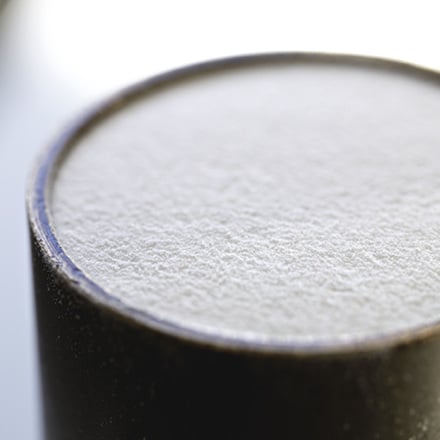
One grain of the PVC powder that Finstral processes into window profiles has a diameter of 0.3 millimetres. Finstral always has 300 tonnes of granulate in stock.
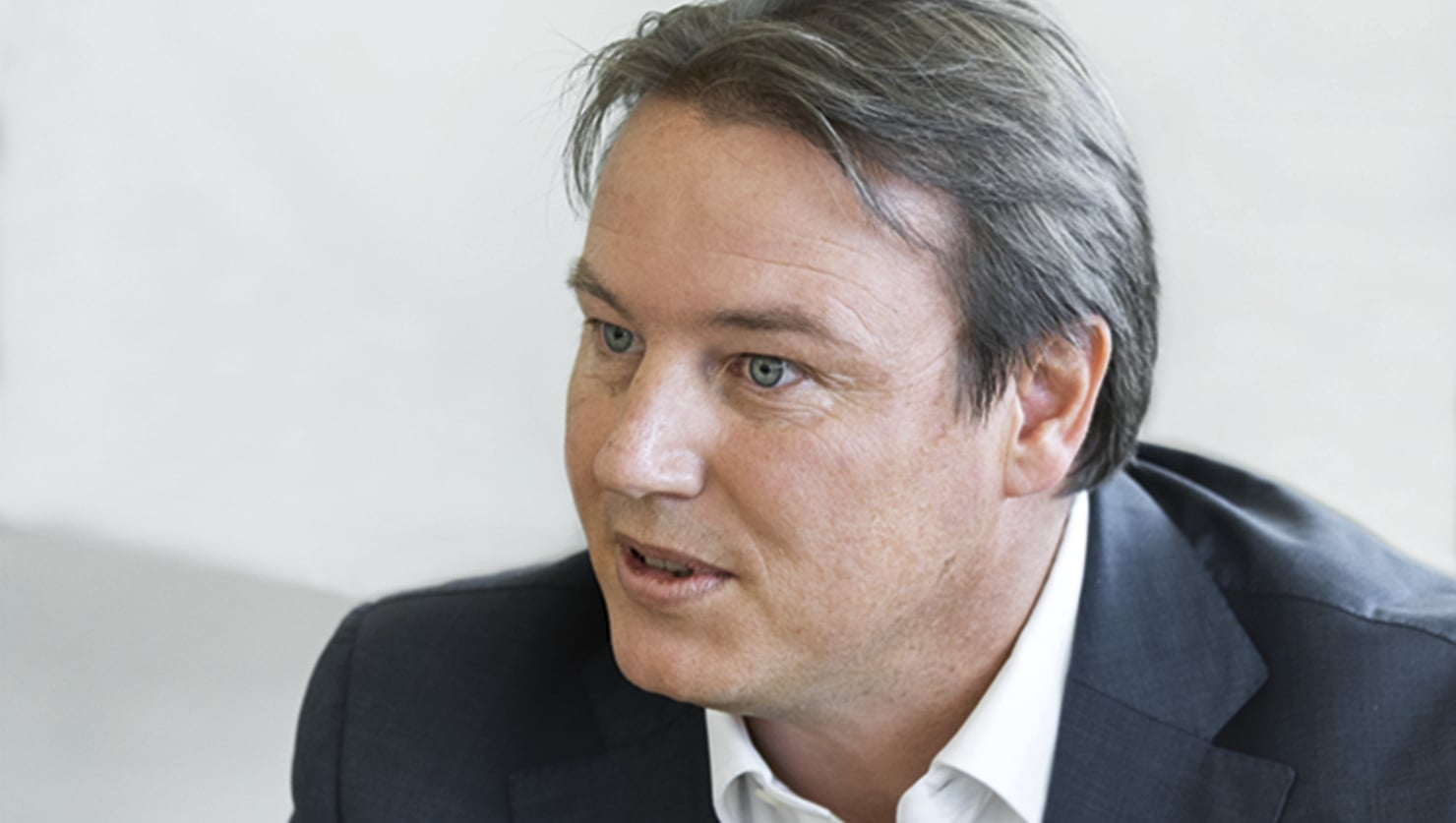
Joachim Oberrauch, member of the board of directors, responsible for marketing and product development. PVC expert at Finstral.
What are the quality criteria for high-quality PVC?
Very similar to a cooking recipe, a PVC mixture can be made to a very high quality, or made a bit leaner when things are tight. Absolute quality criteria are impact resistance, colour fastness and weather resistance. Cheap formulations quickly become brittle, do not remain stable after long exposure to extreme weather conditions and fade in the sun. So, while most window manufacturers buy from system suppliers, we mix and extrude our own PVC compound ourselves, just as we see fit. We voluntarily have the quality of our PVC checked by independent commissions: according to them German RAL quality seal and the French CSTB quality system, because France has different testing criteria. We always get top marks in both tests.
Are you still working on your PVC recipe or have you reached an optimum?Anyone who thinks they have achieved the optimum is not open to new ideas. We are still curious and we want to explore what are the other possibilities. That’s why we are constantly developing the recipe. Technically, on the one hand, in terms of its mechanical properties, but also visually as regards colours and surfaces.
Colours and surfaces? When it comes to PVC windows, we usually think of smooth, white classic models...Our best-selling products are indeed white, but almost always embossed or satined. We introduced special surface embossing into our range in 1984 and, to date, they are only available in Europe from us. We emboss the texture of painted wood or of a silk-matt structure directly into the profile during the extrusion process. The traces that are typical of smooth plastic profiles thus disappear. The result is a more pleasing feel and a compacted, hardened surface with fewer micropores that would otherwise attract dust particles. The frame is therefore not only visually more attractive, it is also much easier to clean.
Colour is also a popular way of enhancing white PVC windows, but Finstral has its own unique approach to this...Yes, we are not convinced of the trend towards coloured window frames, especially if they are used to imitate dark aluminium surfaces. It may be cheaper to glue coloured films onto PVC profiles, but from a functional point of view, this is no good. Dark PVC surfaces heat up considerably in the sun – and PVC softens at a temperature of around 80°C. It is thus highly likely that anthracite grey PVC windows will warp and fade beyond repair over the years. That’s why we have not followed this trend and our attitude is clear: Finstral only offers dark colours with an aluminium veneer that can withstand much higher temperatures. Nor do we use coloured films because, if the surface of the frame gets damaged in the course of a long window life, the white profile will be visible beneath it. Instead, for light shades, we directly pigment the PVC compound and extrude fully coloured profiles from this. This in turn requires a high-quality PVC recipe, because only this will permit perfect colouring and embossing.
So do you also make PVC profiles with a wood appearance without using any films?No – you’ve got me there. We need wood decor films to emulate a typical wood grain on our frames. But we only use high-quality acrylate films, which are not only glued on but are also welded directly to the profile and then embossed. Moreover, the profile and frame seals are not white but rather coloured in the appropriate shade of brown. In the end it is these details that make the difference.
In its early years Finstral bought ready-made profiles. When did you decide to produce these yourself?We began to draw up our own profiles at the beginning of the 1970s and to extrude them to our specifications. When our extrusion supplier then got into financial difficulties, we had a choice: are we looking for a new partner? Or shall we bring production under our own roof? We decided for greater independence and we have been doing everything ourselves since 1980 – from PVC granulate to the finished window. We have never regretted taking this step. Not least because it allows us to drive forward innovation much faster and more independently.
The functional window core is virtually invisible. What possibilities do you see for PVC as a visible element in architecture?PVC has a unique formal language; the material itself is very attractive and versatile. With ForRes, an upcycled material made from PVC waste and rice husks, we have even managed to create a sort of vintage look with a natural, open-pored feel. It is precisely this versatility that makes PVC so interesting for architects and builders: each house has its own style and character, just like those who design it. And PVC here offers countless possibilities.
How do you expect the role of PVC in window construction to develop? What application scenarios do you see? One major issue is that of a narrow frame appearance, allowing more light into the room while playing a much less pronounced architectural role. PVC is especially suitable for realising the desire for large glass surfaces. This is made possible by modern adhesive technology for binding the insulation glass to the frame. At the same time, PVC frames – in contrast to every other material – always achieve optimum insulation values. This is why I believe that PVC will continue to play an increasingly important role in window construction because of its huge functional advantages, but also because of its aesthetic possibilities.
Very similar to a cooking recipe, a PVC mixture can be made to a very high quality, or made a bit leaner when things are tight. Absolute quality criteria are impact resistance, colour fastness and weather resistance. Cheap formulations quickly become brittle, do not remain stable after long exposure to extreme weather conditions and fade in the sun. So, while most window manufacturers buy from system suppliers, we mix and extrude our own PVC compound ourselves, just as we see fit. We voluntarily have the quality of our PVC checked by independent commissions: according to them German RAL quality seal and the French CSTB quality system, because France has different testing criteria. We always get top marks in both tests.
Are you still working on your PVC recipe or have you reached an optimum?Anyone who thinks they have achieved the optimum is not open to new ideas. We are still curious and we want to explore what are the other possibilities. That’s why we are constantly developing the recipe. Technically, on the one hand, in terms of its mechanical properties, but also visually as regards colours and surfaces.
Colours and surfaces? When it comes to PVC windows, we usually think of smooth, white classic models...Our best-selling products are indeed white, but almost always embossed or satined. We introduced special surface embossing into our range in 1984 and, to date, they are only available in Europe from us. We emboss the texture of painted wood or of a silk-matt structure directly into the profile during the extrusion process. The traces that are typical of smooth plastic profiles thus disappear. The result is a more pleasing feel and a compacted, hardened surface with fewer micropores that would otherwise attract dust particles. The frame is therefore not only visually more attractive, it is also much easier to clean.
Colour is also a popular way of enhancing white PVC windows, but Finstral has its own unique approach to this...Yes, we are not convinced of the trend towards coloured window frames, especially if they are used to imitate dark aluminium surfaces. It may be cheaper to glue coloured films onto PVC profiles, but from a functional point of view, this is no good. Dark PVC surfaces heat up considerably in the sun – and PVC softens at a temperature of around 80°C. It is thus highly likely that anthracite grey PVC windows will warp and fade beyond repair over the years. That’s why we have not followed this trend and our attitude is clear: Finstral only offers dark colours with an aluminium veneer that can withstand much higher temperatures. Nor do we use coloured films because, if the surface of the frame gets damaged in the course of a long window life, the white profile will be visible beneath it. Instead, for light shades, we directly pigment the PVC compound and extrude fully coloured profiles from this. This in turn requires a high-quality PVC recipe, because only this will permit perfect colouring and embossing.
So do you also make PVC profiles with a wood appearance without using any films?No – you’ve got me there. We need wood decor films to emulate a typical wood grain on our frames. But we only use high-quality acrylate films, which are not only glued on but are also welded directly to the profile and then embossed. Moreover, the profile and frame seals are not white but rather coloured in the appropriate shade of brown. In the end it is these details that make the difference.
In its early years Finstral bought ready-made profiles. When did you decide to produce these yourself?We began to draw up our own profiles at the beginning of the 1970s and to extrude them to our specifications. When our extrusion supplier then got into financial difficulties, we had a choice: are we looking for a new partner? Or shall we bring production under our own roof? We decided for greater independence and we have been doing everything ourselves since 1980 – from PVC granulate to the finished window. We have never regretted taking this step. Not least because it allows us to drive forward innovation much faster and more independently.
The functional window core is virtually invisible. What possibilities do you see for PVC as a visible element in architecture?PVC has a unique formal language; the material itself is very attractive and versatile. With ForRes, an upcycled material made from PVC waste and rice husks, we have even managed to create a sort of vintage look with a natural, open-pored feel. It is precisely this versatility that makes PVC so interesting for architects and builders: each house has its own style and character, just like those who design it. And PVC here offers countless possibilities.
How do you expect the role of PVC in window construction to develop? What application scenarios do you see? One major issue is that of a narrow frame appearance, allowing more light into the room while playing a much less pronounced architectural role. PVC is especially suitable for realising the desire for large glass surfaces. This is made possible by modern adhesive technology for binding the insulation glass to the frame. At the same time, PVC frames – in contrast to every other material – always achieve optimum insulation values. This is why I believe that PVC will continue to play an increasingly important role in window construction because of its huge functional advantages, but also because of its aesthetic possibilities.
Still want more?
See here for further interesting reading matter.
